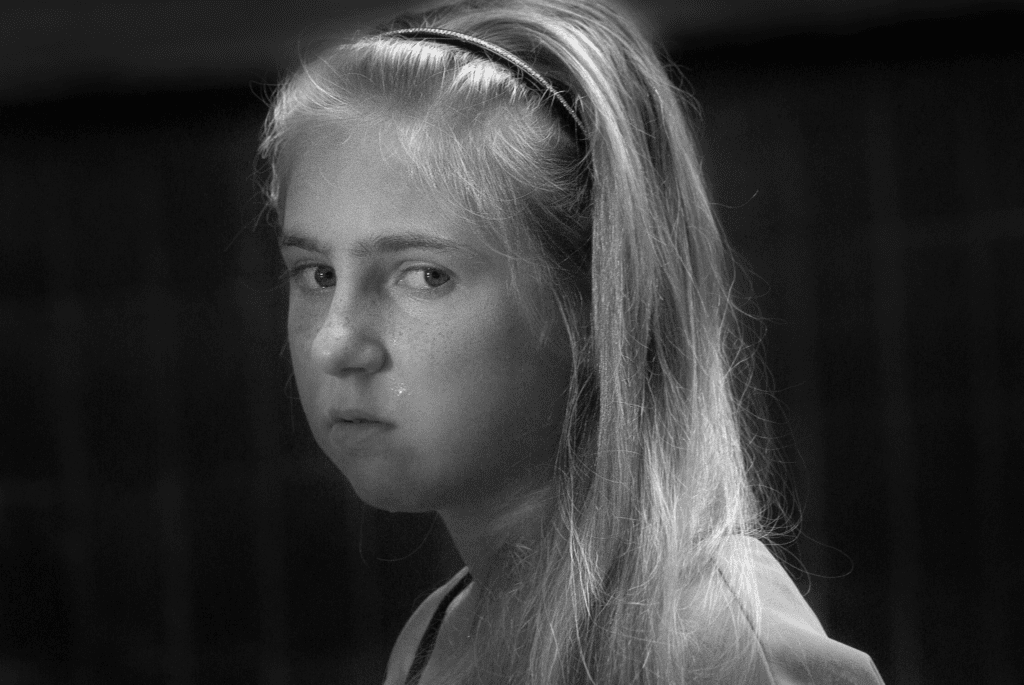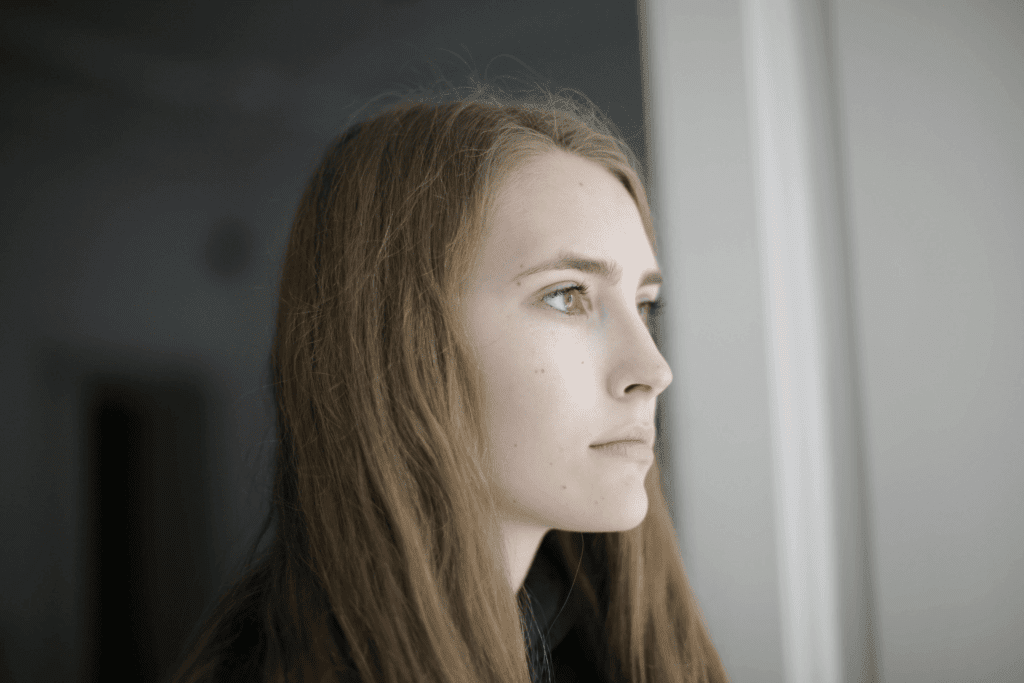Last updated on December 18th, 2024 at 03:15 am
- 1. Understanding Mood Disorders
- 1.1 The Prevalence of Mood Disorders
- 1.2 Historical Context of Mood Disorders
- 2. Types of Mood Disorders
- 2.1 Major Depressive Disorder (MDD)
- 2.2 Bipolar Disorder
- 2.3 Persistent Depressive Disorder (Dysthymia)
- 2.4 Seasonal Affective Disorder (SAD)
- 3. Causes and Risk Factors of Mood Disorders
- 3.1 Biological Factors
- 3.2 Psychological Factors
- 3.3 Environmental Factors
- 4. Diagnosis of Mood Disorders
- 4.1 Clinical Assessment
- 4.2 Diagnostic Criteria
- 4.3 Differential Diagnosis
- 5. Treatment Options for Mood Disorders
- 5.1 Psychotherapy
- 5.2 Medication
- 5.3 Electroconvulsive Therapy (ECT)
- 5.4 Transcranial Magnetic Stimulation (TMS)
- 5.5 Light Therapy
- 6. Lifestyle Modifications and Self-Care Strategies
- 6.1 Regular Exercise
- 6.2 Healthy Diet
- 6.3 Sleep Hygiene
- 6.4 Stress Management Techniques
- 6.5 Social Support
- 7. Future Directions in Mood Disorder Research and Treatment
- 7.1 Personalized Medicine
- 7.2 Novel Therapeutic Approaches
- 7.3 Neuroplasticity-Based Interventions
- Neurobiological Insights into Mood Disorders
- Genetic and Environmental Influences
- Stressful Life Events and Their Role
- Hormonal Factors and Mood Disorders
- Comorbid Conditions and Mood Disorders
- Types of Mood Disorders: Extended Overview
- Suicidal Behavior and Warning Signs
- Pharmacological Advances in Treatment
- Brain Stimulation and Alternative Therapies
- Lifestyle and Self-Help Strategies
- Family Involvement and Social Support
- Seasonal and Hormonal Variations in Mood Disorders
- The Role of Healthcare Providers in Management
- Expanding Understanding of Mood Disorder Risk Factors
- Stressful Events and Development of Mood Disorders
- Genetic Factors and Mood Disorder Susceptibility
- Impact of Mood Disorders on Daily Life
- Work Performance and Quality of Life
- Physical Symptoms and Daily Functioning
- Comorbidities and Diagnostic Challenges
- Mood Disorder and Psychotic Features
- Mood Disorder and Personality Disorders
- Emerging Treatment Options and Considerations
- Adjunctive Treatments for Mood Disorders
- Long-Term Follow-Up and Maintenance
- Psychosocial and Cultural Considerations
- Mood Disorder and Stigma
- Mood Disorder and Cultural Factors
- Hormonal Cycles and Mood Symptoms
- Onset of Menses and Mood Dysregulation
- Postpartum Depression and Treatment Needs
- The Role of Non-Traditional Therapies
- Mood Disorder and Alternative Treatments
- Mood Disorder and Creative Therapies
- Medication Adherence and Therapy Compliance
- Mood Disorder and Medication Adherence
- Mood Disorder and Therapy Compliance
- Legal Rights and Financial Considerations
- Mood Disorder and Legal Rights
- Mood Disorder and Financial Considerations
- Conclusion
- Frequently Asked Questions
- What Is The Definition Of Mood Disorders?
- How Are Mood Disorders Classified In The DSM-5?
- What Are The Common Types Of Mood Disorders?
- What Are The Symptoms Of Mood Disorders?
- How Is Major Depression Different From Bipolar Disorder?
- What Are The Risk Factors For Developing Mood Disorders?
- How Does Mood Disorder Affect Daily Functioning?
- How Is Mood Disorder Diagnosed?
- What Are The Types Of Treatment Options Available For Mood Disorders?
- How Can Mood Disorders Be Treated With Antidepressant Medications?
- What Are Some Alternative Therapies For Mood Disorders?
- What Is The Role Of Family Therapy In Mood Disorder Treatment?
- How Do Traumatic Events Trigger Mood Disorders?
- What Are The Treatment Options For Severe Depression?
- How Are Mood Disorders Related To Hormonal Imbalances?
- How Do Mood Disorders Affect Work Performance?
- What Is The Connection Between Mood Disorders And Sleep Disturbances?
- How Does Cognitive Function Get Affected By Mood Disorders?
- How Can Lifestyle Changes Help Manage Mood Disorders?
- What Are The Long-Term Effects Of Untreated Mood Disorders?
Mood disorders are complex mental health conditions that significantly impact an individual’s emotional state, often disrupting daily life and overall well-being.
These disorders affect millions of people worldwide, transcending age, gender, and cultural boundaries. Understanding the intricacies of mood disorders is crucial for early detection, proper diagnosis, and effective treatment.
1. Understanding Mood Disorders
Mood disorders are characterized by persistent alterations in a person’s emotional state, ranging from extreme highs to debilitating lows. These conditions go beyond typical mood fluctuations and can severely impact one’s ability to function in personal, social, and professional settings.
1.1 The Prevalence of Mood Disorders
Recent studies indicate that mood disorders affect approximately 20% of the global population at some point in their lives. In the United States alone, it’s estimated that over 20 million adults experience a mood disorder annually. These statistics highlight the widespread nature of these conditions and underscore the importance of addressing them as a significant public health concern.
1.2 Historical Context of Mood Disorders
The recognition and understanding of mood disorders have evolved significantly over time. Ancient Greek and Roman physicians described conditions resembling modern-day depression and mania. However, it wasn’t until the late 19th and early 20th centuries that mood disorders began to be systematically studied and classified.
Emil Kraepelin, a German psychiatrist, made significant contributions to the field by distinguishing between manic-depressive illness (now known as bipolar disorder) and dementia praecox (now called schizophrenia). This laid the groundwork for the modern classification of mood disorders.
2. Types of Mood Disorders
Mood disorders encompass a range of conditions, each with its unique characteristics and challenges. Understanding these different types is crucial for accurate diagnosis and appropriate treatment.
2.1 Major Depressive Disorder (MDD)
Major Depressive Disorder, commonly known as clinical depression, is characterized by persistent feelings of sadness, hopelessness, and loss of interest in activities. Symptoms typically last for at least two weeks and can significantly impair daily functioning.
Key symptoms of MDD include:
– Persistent sad or empty mood
– Loss of interest in previously enjoyed activities
– Significant changes in appetite or weight
– Sleep disturbances (insomnia or excessive sleeping)
– Fatigue or loss of energy
– Feelings of worthlessness or excessive guilt
– Difficulty concentrating or making decisions
– Recurrent thoughts of death or suicide


2.2 Bipolar Disorder
Bipolar disorder is characterized by alternating episodes of mania (or hypomania) and depression. This condition was previously known as manic-depressive illness.
There are several types of bipolar disorder:
Bipolar I Disorder: Characterized by manic episodes lasting at least seven days, or severe manic symptoms requiring immediate hospital care. Depressive episodes typically last at least two weeks.
Bipolar II Disorder: Defined by a pattern of depressive episodes and hypomanic episodes, but not full-blown manic episodes.
Cyclothymic Disorder: Involves periods of hypomanic symptoms and periods of depressive symptoms lasting for at least two years (one year in children and adolescents).
2.3 Persistent Depressive Disorder (Dysthymia)
Persistent Depressive Disorder, also known as dysthymia, is a chronic form of depression. While the symptoms may be less severe than those of major depression, they persist for a longer duration, typically two years or more.
Symptoms of dysthymia include:
– Persistent sad or empty mood
– Loss of interest in daily activities
– Low self-esteem
– Feelings of hopelessness
– Poor appetite or overeating
– Sleep disturbances
– Low energy or fatigue
– Poor concentration
– Difficulty making decisions
2.4 Seasonal Affective Disorder (SAD)
Seasonal Affective Disorder is a type of depression that’s related to changes in seasons. Most people with SAD experience symptoms starting in the fall and continuing into the winter months, sapping their energy and making them feel moody.
Symptoms specific to winter-onset SAD may include:
– Oversleeping
– Appetite changes, especially a craving for foods high in carbohydrates
– Weight gain
– Tiredness or low energy
3. Causes and Risk Factors of Mood Disorders
The etiology of mood disorders is complex and multifaceted, involving a interplay of biological, psychological, and environmental factors.


3.1 Biological Factors
Genetic Predisposition: Family history plays a significant role in the development of mood disorders. Studies have shown that individuals with a first-degree relative (parent or sibling) with a mood disorder are at a higher risk of developing one themselves.
Brain Chemistry: Imbalances in neurotransmitters, particularly serotonin, norepinephrine, and dopamine, are associated with mood disorders. These chemical messengers play crucial roles in regulating mood, emotions, and cognitive functions.
Hormonal Imbalances: Fluctuations in hormones, such as those occurring during pregnancy, postpartum, menopause, or thyroid disorders, can trigger or exacerbate mood disorders.
3.2 Psychological Factors
Personality Traits: Certain personality types, such as those prone to pessimism, low self-esteem, or perfectionism, may be more susceptible to mood disorders.
Cognitive Patterns: Negative thought patterns, distorted perceptions, and maladaptive coping mechanisms can contribute to the development and maintenance of mood disorders.
Trauma and Stress: Childhood trauma, abuse, or significant life stressors can increase vulnerability to mood disorders.
3.3 Environmental Factors
Chronic Stress: Prolonged exposure to stress, whether from work, relationships, or other sources, can trigger or worsen mood disorders.
Social Support: Lack of a strong support system or social isolation can increase the risk of developing mood disorders.
Substance Abuse: Drug or alcohol abuse can both trigger and exacerbate mood disorders.
Seasonal Changes: As seen in Seasonal Affective Disorder, changes in light exposure and seasons can impact mood regulation.
4. Diagnosis of Mood Disorders
Accurate diagnosis of mood disorders is crucial for effective treatment. The process typically involves a comprehensive evaluation by a mental health professional.


4.1 Clinical Assessment
A thorough clinical assessment includes:
– Detailed medical and psychiatric history
– Family history of mental health conditions
– Physical examination to rule out medical conditions that may mimic mood disorders
– Psychological evaluation using standardized questionnaires and interviews
4.2 Diagnostic Criteria
Mental health professionals use the criteria outlined in the Diagnostic and Statistical Manual of Mental Disorders (DSM-5) to diagnose mood disorders. These criteria specify the type, duration, and severity of symptoms required for a diagnosis.
4.3 Differential Diagnosis
It’s important to differentiate mood disorders from other mental health conditions or medical issues that may present similar symptoms. This may involve:
– Ruling out substance-induced mood disorders
– Distinguishing between bipolar disorder and unipolar depression
– Considering comorbid conditions such as anxiety disorders or personality disorders
5. Treatment Options for Mood Disorders
Treatment for mood disorders typically involves a combination of approaches tailored to the individual’s specific condition and needs.
5.1 Psychotherapy
Various forms of psychotherapy have proven effective in treating mood disorders:
Cognitive Behavioral Therapy (CBT): This approach helps individuals identify and change negative thought patterns and behaviors that contribute to their mood disorder.
Interpersonal Therapy (IPT): Focuses on improving interpersonal relationships and social functioning, which can be particularly beneficial for those with depression.
Dialectical Behavior Therapy (DBT): Originally developed for borderline personality disorder, DBT has shown efficacy in treating mood disorders, particularly in managing emotional regulation.
Psychodynamic Therapy: This approach explores unconscious thoughts and early life experiences that may contribute to current mood issues.


5.2 Medication
Pharmacological interventions play a crucial role in managing mood disorders:
Antidepressants: Including selective serotonin reuptake inhibitors (SSRIs), serotonin-norepinephrine reuptake inhibitors (SNRIs), and others, these medications help regulate brain chemistry to alleviate depressive symptoms.
Mood Stabilizers: Commonly used in bipolar disorder, these medications help prevent manic and depressive episodes.
Antipsychotics: Sometimes used in combination with mood stabilizers for bipolar disorder or severe depression with psychotic features.
5.3 Electroconvulsive Therapy (ECT)
ECT involves applying electrical currents to the brain to trigger a brief seizure. It’s typically used for severe cases of depression that haven’t responded to other treatments.
5.4 Transcranial Magnetic Stimulation (TMS)
TMS is a non-invasive procedure that uses magnetic fields to stimulate specific areas of the brain associated with mood regulation. It’s often used for treatment-resistant depression.
5.5 Light Therapy
Particularly effective for Seasonal Affective Disorder, light therapy involves exposure to bright, artificial light to regulate the body’s internal clock and improve mood.
6. Lifestyle Modifications and Self-Care Strategies
In addition to professional treatment, certain lifestyle changes and self-care practices can significantly improve outcomes for individuals with mood disorders.
6.1 Regular Exercise
Physical activity has been shown to have mood-boosting effects. Regular exercise can:
– Increase the production of endorphins, the body’s natural mood elevators
– Reduce stress and anxiety
– Improve sleep quality
– Enhance self-esteem and cognitive function
6.2 Healthy Diet
Nutrition plays a crucial role in mental health. A balanced diet rich in:
– Omega-3 fatty acids (found in fish, flaxseed, and walnuts)
– Complex carbohydrates (whole grains, vegetables)
– Lean proteins
– Antioxidants (found in colorful fruits and vegetables)
can support brain health and mood regulation.


6.3 Sleep Hygiene
Maintaining a consistent sleep schedule and practicing good sleep hygiene can significantly impact mood. This includes:
– Sticking to a regular sleep-wake cycle
– Creating a relaxing bedtime routine
– Avoiding screens before bedtime
– Ensuring a comfortable sleep environment
6.4 Stress Management Techniques
Effective stress management is crucial for individuals with mood disorders. Techniques may include:
– Mindfulness meditation
– Deep breathing exercises
– Progressive muscle relaxation
– Yoga or tai chi
6.5 Social Support
Maintaining strong social connections can provide emotional support and help prevent isolation. This may involve:
– Joining support groups
– Staying connected with friends and family
– Participating in community activities
7. Future Directions in Mood Disorder Research and Treatment
The field of mood disorder research is continuously evolving, with promising developments on the horizon.
7.1 Personalized Medicine
Advances in genetic research and neuroimaging are paving the way for more personalized treatment approaches. This could involve:
– Genetic testing to predict medication response
– Brain imaging to guide treatment selection
– Tailored combination therapies based on individual biomarkers


7.2 Novel Therapeutic Approaches
Emerging treatments for mood disorders include:
Ketamine and Esketamine: Rapid-acting antidepressants showing promise for treatment-resistant depression.
Psychedelic-Assisted Therapy: Ongoing research into the potential therapeutic benefits of substances like psilocybin for depression and anxiety.
Digital Therapeutics: The development of smartphone apps and virtual reality tools for mood monitoring and intervention.
7.3 Neuroplasticity-Based Interventions
Research into brain plasticity is opening new avenues for treatment, including:
– Cognitive training programs to enhance neural connectivity
– Neurofeedback techniques to self-regulate brain activity
– Brain stimulation technologies to modulate neural circuits involved in mood regulation
Neurobiological Insights into Mood Disorders
Recent advancements in understanding the neurobiological underpinnings of mood disorders have identified critical changes in the brain’s structure and function. Research shows that alterations in brain areas responsible for mood regulation, such as the orbitofrontal cortex, contribute significantly to the symptoms of mood disorders.
These changes in brain chemistry can result from genetic factors, hormonal imbalances, or environmental influences. All of these factors are crucial for understanding the pathophysiology of mood disorder.
Genetic and Environmental Influences
Genetic predisposition plays a major role in the development of depression and other mood disorders. Studies involving identical twins indicate a significant heritability component, suggesting that shared genetic markers can increase the risk of mood disorders.
DNA methylation studies have revealed how environmental factors can interact with genetic material. This interaction modifies expression and increases the risk of mood disorders, especially in people with a positive family history.
Stressful Life Events and Their Role
Traumatic events and stressful life events are common precursors to mood disorder onset. Childhood experiences, including trauma or loss, contribute to the risk of mood disorders later in life.
The onset of depressive mood disorders can often be linked to specific life events that trigger extreme sadness. These events ultimately affect one’s quality of life, emphasizing the importance of managing stress.


Hormonal Factors and Mood Disorders
Hormonal imbalances, particularly related to the onset of menstruation, postpartum depression, and other reproductive changes, significantly contribute to mood disorders. The age of onset for mood symptoms is frequently associated with reproductive stages, including the menstrual period and postpartum phases.
Increased vulnerability to depressive episodes has been observed during these hormonal shifts. These changes are among the common signs that can exacerbate depressive mood disorders in susceptible individuals.
Comorbid Conditions and Mood Disorders
Mood disorders frequently co-occur with other psychiatric conditions, adding complexity to diagnosis and treatment. Disorders like Generalized anxiety disorder and Panic disorder are commonly seen in patients with mood disorders.
Differential diagnosis is essential to prevent misdiagnosis and ensure appropriate treatment. Similarly, substance use disorder often accompanies mood disorders, complicating treatment efforts and leading to worse outcomes if untreated.
Types of Mood Disorders: Extended Overview
Beyond major depression and bipolar spectrum disorders, other common types of mood disorders include Disruptive mood dysregulation disorder and dysthymic disorder. Disruptive mood dysregulation disorder is characterized by chronic irritability and severe temper outbursts, primarily in children.
Dysthymic disorder represents a milder form of depression but with symptoms that persist for an extended period. These prolonged symptoms often affect daily functioning, making treatment crucial.
Suicidal Behavior and Warning Signs
Severe symptoms of mood disorders can lead to suicidal ideations or behaviors. Recognizing the warning signs is critical for timely intervention.
Symptoms of depression, such as feelings of worthlessness or extreme sadness, often precede such behaviors. Healthcare providers must be vigilant in identifying these signs in depressed patients to ensure prompt intervention.
Pharmacological Advances in Treatment
Treatment of mood disorders often involves antidepressant medications, which are integral to managing symptoms after onset. A personalized treatment plan can involve various classes of antidepressants.
Dosage recommendation must be tailored to the patient’s needs. Mood stabilizers, such as valproic acid, are often used in bipolar depression, while common side effects must be monitored for adherence.


Brain Stimulation and Alternative Therapies
Brain stimulation therapy, including Transcranial Magnetic Stimulation (TMS), is increasingly recognized as an effective intervention, especially for patients with treatment-resistant mood disorders. This non-invasive approach targets specific brain areas responsible for mood regulation.
Promoting Neuronal plasticity and positive effects on mood symptoms are key benefits of TMS. Alternative therapies, such as mindfulness practices and meditation techniques, also support treatment by reducing irritable mood and enhancing emotional lability.
Lifestyle and Self-Help Strategies
Lifestyle modifications are crucial components of a comprehensive mood disorder treatment plan. Regular exercise benefits individuals with mood disorders by improving energy level and mitigating feelings of sadness.
Dietary influences, including omega-3 intake, play a role in managing mood symptoms. Relaxation exercises and creative therapies are also effective for reducing stress and maintaining normal activities.
Family Involvement and Social Support
Family therapy and caregiver support play essential roles in improving outcomes for patients with mood disorders. Family involvement helps in understanding the complex nature of mood symptoms and ensures medication adherence.
Social workers and behavioral health specialists are key components of the support system. They guide patients and their families toward better management of psychiatric disorders.
Seasonal and Hormonal Variations in Mood Disorders
Seasonal pattern variations, such as those seen in Seasonal Affective Disorder, often lead to mood changes in colder months. The decreased daylight can result in mood disorder and sleep disturbances.
Interventions like light therapy are often required to alleviate symptoms. Hormonal variations, including onset of menses followed by dysphoric disorder symptoms, further highlight the relationship between mood disorder and hormonal imbalances.
The Role of Healthcare Providers in Management
Primary care providers play a fundamental role in the early identification and treatment of mood disorders. Physical exams and a detailed medical history are essential in differentiating between mood disorder and physical health conditions.
Collaborating with psychiatrists, social workers, and behavioral health specialists ensures a holistic approach to treatment. This multidisciplinary approach aims for better management of symptoms.


Expanding Understanding of Mood Disorder Risk Factors
Stressful Events and Development of Mood Disorders
Stressful events, including significant life changes such as job loss or relationship breakdowns, can trigger mood disorders. The development of depression often occurs in individuals experiencing chronic stress without adequate support.
Effective stress management is crucial in preventing mood disorders. Early intervention helps individuals build resilience against stressful events.
Genetic Factors and Mood Disorder Susceptibility
Genetic factors continue to play a pivotal role in the susceptibility to mood disorders. Candidate genes linked to serotonin regulation have been identified as contributing to a person’s vulnerability.
A positive family history of mood disorders further increases the risk of mood disorder development. This is especially true for individuals also experiencing environmental stressors.
Impact of Mood Disorders on Daily Life
Work Performance and Quality of Life
Mood disorders have significant effects on work performance and overall quality of life. Individuals with untreated illness often struggle to meet job responsibilities.
This can lead to absenteeism and reduced productivity. Additionally, depressed patients may face a decline in the ability to perform normal activities, impacting their economic and social well-being.
Physical Symptoms and Daily Functioning
Physical symptoms, such as changes in sleep patterns, appetite fluctuations, and Lack of energy, are common symptoms of mood disorders. These symptoms can disrupt everyday life and impair one’s ability to maintain routines.
Addressing these physical aspects is essential for improving daily functioning. Treatment adherence helps manage these symptoms effectively.
Comorbidities and Diagnostic Challenges
Mood Disorder and Psychotic Features
Mood disorders can sometimes manifest with psychotic symptoms, complicating the diagnostic process. Differentiating between psychotic disorders and mood disorder with psychotic features requires careful clinical assessment.
Symptoms such as delusions or hallucinations must be evaluated to determine whether they are secondary to a mood episode. Understanding this distinction helps in accurate diagnosis and treatment.
Mood Disorder and Personality Disorders
Mood disorder and personality disorders often co-exist, with mood symptoms exacerbated by underlying personality traits. Individuals with borderline personality disorder, for example, may exhibit emotional lability and extreme mood swings.
Accurate identification of both conditions is vital for providing a tailored treatment plan. Coexisting conditions require an integrated approach to treatment.
Emerging Treatment Options and Considerations
Adjunctive Treatments for Mood Disorders
Adjunctive treatment approaches are gaining attention for patients with severe depression. These include Corticosteroid-induced neuropsychiatric disorders treatment strategies that consider hormonal influences.
Integrating multiple forms of treatment may help address resistant cases. This integrative approach can improve outcomes for individuals with a history of mood disorders.


Long-Term Follow-Up and Maintenance
Long-term follow-up is crucial in managing chronic mood disorders, as recurrence is common. Treatment often requires a lifetime prevalence approach.
Maintaining stability and preventing relapse are the main goals of long-term management. Ongoing monitoring and access to healthcare providers are essential for better outcomes.
Psychosocial and Cultural Considerations
Mood Disorder and Stigma
Stigma surrounding mental illness, including mood disorders, remains a significant barrier to seeking treatment. Many people with mood disorders experience discrimination that impacts their willingness to engage in treatment.
Addressing stigma through patient education and advocacy is crucial. Reducing stigma helps improve access to mental health services.
Mood Disorder and Cultural Factors
Cultural factors influence the expression and perception of mood disorders. Differences in how symptoms, such as sad mood or dysphoric mood, are reported can affect diagnosis.
Healthcare providers must be culturally sensitive to effectively understand and manage psychiatric disorders. This ensures that treatment is tailored to individual needs.
Hormonal Cycles and Mood Symptoms
Onset of Menses and Mood Dysregulation
The onset of menses can be a period of increased risk for mood symptoms, particularly for individuals prone to depressive or dysphoric disorders. Mood disorder and appetite changes are common during this phase.
Sleep disturbances also contribute to mood dysregulation. Targeted approaches are necessary to manage symptoms linked to hormonal fluctuations.
Postpartum Depression and Treatment Needs
Postpartum depression is a severe form of mood disorder occurring after childbirth. Specialized intervention is required to address the unique symptoms experienced during this time.
Symptoms often include feelings of guilt, Lack of energy, and difficulty bonding with the baby. Early diagnosis is critical to prevent worse outcomes and improve maternal mental health.
The Role of Non-Traditional Therapies
Mood Disorder and Alternative Treatments
Mood disorder and alternative treatments, such as herbal supplements, acupuncture, and yoga, are being explored for their potential to alleviate symptoms. Though evidence is mixed, some patients find relief through these methods.
These non-traditional approaches are often used alongside conventional treatments. Integrating these methods helps create a personalized treatment plan.
Mood Disorder and Creative Therapies
Creative therapies, such as art therapy and music therapy, have positive effects on individuals with mood disorders. These therapeutic techniques help express difficult emotions.
Behavioral activation through creative means can enhance engagement in pleasurable activities. This engagement fosters mood improvement and emotional well-being.
Medication Adherence and Therapy Compliance
Mood Disorder and Medication Adherence
Adherence to prescribed medication is critical in treating mood disorders. Common mood disorders, such as clinical depression, require consistent use of medication despite side effects.
Supporting medication adherence through patient education is essential. Addressing barriers helps achieve optimal treatment results.
Mood Disorder and Therapy Compliance
Compliance with mood disorder therapy techniques is equally important for symptom reduction. Behavioral disorder management often includes structured therapy, such as CBT.
Building a supportive therapeutic relationship can increase compliance. Active participation in therapy is crucial for better outcomes.


Legal Rights and Financial Considerations
Mood Disorder and Legal Rights
Patients with mood disorders have legal rights protecting them from discrimination in the workplace and healthcare settings. Understanding these rights is essential for advocacy.
Educational resources, such as those from the National Alliance on Mental Illness, help individuals understand their rights. Seeking reasonable accommodations can improve treatment engagement.
Mood Disorder and Financial Considerations
Financial considerations are often a barrier to seeking consistent treatment for mood disorders. The cost of medication management, therapy, and other services can be prohibitive.
Access to public health services and insurance coverage can mitigate these barriers. Ensuring affordability is crucial for continuous and effective treatment.
Conclusion
Mood disorders represent a significant challenge in mental health, affecting millions worldwide and impacting all aspects of life. However, with advances in understanding, diagnosis, and treatment, there is hope for those affected.
A comprehensive approach combining professional treatment, lifestyle modifications, and emerging therapies offers the best chance for managing these conditions effectively.
As research continues to uncover the complex interplay of factors contributing to mood disorders, new and more targeted interventions are on the horizon. The future of mood disorder treatment lies in personalized, holistic approaches that address the unique needs of each individual, offering the promise of better outcomes and improved quality of life for those living with these challenging conditions.
From Embrace Inner Chaos to your inbox
Transform your Chaos into authentic personal growth – sign up for our free weekly newsletter! Stay informed on the latest research advancements covering:
Narcissistic Personality Disorder (NPD)
Frequently Asked Questions
What Is The Definition Of Mood Disorders?
Mood disorders are psychiatric conditions characterized by persistent alterations in mood. These alterations can range from extreme sadness to excessive elevation of mood.
These disorders significantly impact the quality of life and everyday functioning of affected individuals. The term encompasses various specific conditions, such as major depression and bipolar spectrum disorders.
According to the American Psychiatric Association, these disorders are also closely related to disruptions in sleep patterns. They can also affect appetite and energy level.
How Are Mood Disorders Classified In The DSM-5?
Mood disorders are classified in the DSM-5 based on the type and duration of symptoms presented. The manual identifies major types of mood disorders, such as Major Depressive Disorder, Bipolar Disorder, and Cyclothymic Disorder.
Diagnostic criteria for each include specific symptoms such as depressed mood, elevated mood, and mixed episodes. The Cleveland Clinic notes that mood disorders also include newer classifications like Disruptive Mood Dysregulation Disorder.
These newer classifications reflect advances in understanding these complex conditions. They help clinicians provide more accurate diagnoses and effective treatment options.
What Are The Common Types Of Mood Disorders?
Common mood disorders include major depression, bipolar disorder, and dysthymic disorder. Major depression is marked by prolonged feelings of sadness and a lack of interest in activities that once brought pleasure.
Bipolar disorder involves cycles of depressive and manic episodes. Dysthymic disorder, now referred to as Persistent Depressive Disorder, is characterized by milder symptoms that last for a prolonged period.
National Institute of Mental Health explains that mood disorders also vary in terms of severity. They can significantly impact physical health, complicating everyday activities.
What Are The Symptoms Of Mood Disorders?
Symptoms of mood disorders vary depending on the type. Common symptoms include extreme mood swings, altered energy levels, irritability, and severe episodes of depression.
For some individuals, mood changes are accompanied by psychotic symptoms like delusions or hallucinations. According to Cleveland Clinic, mood disorders can also lead to changes in sleep and appetite.
These changes impact the overall physical health of individuals. They also reduce the ability to engage in pleasurable activities.
How Is Major Depression Different From Bipolar Disorder?
Major depression and bipolar disorder are both mood disorders, but they differ significantly in their presentation. Major depression involves persistent depressive episodes marked by feelings of sadness.
Bipolar disorder involves alternating phases of depression and mania. During manic episodes, individuals may feel an elevated mood, increased goal-directed activity, or extreme irritability.
The National Alliance on Mental Illness emphasizes that depressive periods in both disorders may seem similar. However, bipolar disorder’s inclusion of manic phases makes it distinct and requires different treatment approaches.
What Are The Risk Factors For Developing Mood Disorders?
The risk of mood disorders can be influenced by genetic factors, personal or family history of mood disorders, and traumatic events. Research has shown that individuals with a positive family history are more prone to developing these conditions.
According to Mayo Clinic, stress, substance abuse, and significant life changes can also increase vulnerability to mood disorders. Childhood experiences such as trauma or exposure to violence have been linked to the development of both depressive and bipolar disorders.
How Does Mood Disorder Affect Daily Functioning?
Mood disorders can severely impact daily functioning, affecting relationships, work performance, and quality of life. Individuals often experience symptoms such as lack of energy and reduced concentration.
They may also have difficulty engaging in activities they once enjoyed. According to Cleveland Clinic, mood fluctuations can lead to difficulties in maintaining social interactions.
These mood changes can also hinder fulfilling job responsibilities. Consequently, they reduce the overall quality of life.
How Is Mood Disorder Diagnosed?
Mood disorder diagnosis typically involves a combination of physical exams, psychological assessments, and medical history review. Healthcare providers assess mood symptoms, energy level, and possible risk factors, such as family history.
Recent traumatic events are also considered in the diagnostic process. The National Institute of Mental Health suggests that differential diagnosis is crucial.
Differential diagnosis helps distinguish mood disorders from other psychiatric conditions, such as anxiety or personality disorders. Accurate diagnosis is essential for effective treatment.
What Are The Types Of Treatment Options Available For Mood Disorders?
Treatment options for mood disorders include a combination of psychotherapy, medication management, and lifestyle interventions. Common therapies used are cognitive-behavioral therapy and family therapy.
These therapies aim to improve coping mechanisms and emotional regulation. Medications, such as antidepressant medications, are also used to alleviate symptoms of depression.
The American Psychiatric Association also highlights the use of Brain Stimulation Therapy. This therapy is often utilized for treatment-resistant depression.
How Can Mood Disorders Be Treated With Antidepressant Medications?
Antidepressant medications are commonly used to treat depressive mood disorders by altering brain chemistry to improve mood. These medications often take several weeks to show full efficacy.
According to National Institute of Mental Health, common side effects may include dry mouth and dizziness. Cognitive side effects like reduced concentration are also possible.
Healthcare providers may adjust dosage recommendations to reduce adverse effects. Proper dosage management is crucial for ensuring medication adherence.
What Are Some Alternative Therapies For Mood Disorders?
Alternative therapies for mood disorders include mindfulness practices, meditation techniques, and creative therapies. These therapies help in managing milder symptoms and can complement traditional treatment.
Mayo Clinic reports that mindfulness exercises can reduce symptoms of depression. They help individuals manage stress and focus on the present moment.
Creative therapies, such as art therapy, provide outlets for emotional expression. These activities can have positive effects on mental well-being.
What Is The Role Of Family Therapy In Mood Disorder Treatment?
Family therapy is often used in mood disorder treatment to address dynamics that may contribute to the illness or complicate recovery. By involving family members, therapy helps reduce misunderstandings.
It also helps in building support systems for people with mood disorders. According to National Alliance on Mental Illness, family involvement in therapy can lead to better outcomes for the patient.
Family members gain a better understanding of the disorder. They also learn coping mechanisms to deal with the challenges of the disorder.
How Do Traumatic Events Trigger Mood Disorders?
Traumatic events, such as abuse, violence, or loss of a loved one, can trigger the onset of mood disorders, especially in those with a genetic predisposition. The American Psychiatric Association indicates that traumatic stress can lead to changes in brain areas responsible for emotion regulation.
These changes, such as those in the orbitofrontal cortex, potentially increase the risk of developing mood disorders. Individuals with childhood trauma may show more severe symptoms in adulthood.
The severity of these symptoms often results in worse outcomes. Early intervention is crucial to manage the impact of traumatic events.
What Are The Treatment Options For Severe Depression?
Severe depression requires a multi-faceted approach, including medications, psychotherapy, and, in some cases, hospitalization. Individuals with suicidal ideations or psychotic symptoms may require intensive inpatient care.
National Institute of Mental Health also discusses advanced treatments like electroconvulsive therapy (ECT). Brain stimulation therapies are used for severe cases where medication alone is insufficient.
These therapies offer additional support for patients who do not respond to conventional treatments. Proper treatment is essential for preventing severe consequences.
How Are Mood Disorders Related To Hormonal Imbalances?
Mood disorders have been closely linked to hormonal imbalances, such as those occurring during the menstrual period, postpartum, or menopause. These hormonal fluctuations contribute to depressive and manic symptoms in women.
Women are particularly vulnerable during these phases. The Mayo Clinic notes that symptoms after onset of menstruation often worsen for individuals with a history of mood disorders.
This connection indicates a strong relationship between hormones and mood regulation. Addressing hormonal imbalances can be part of mood disorder treatment.
How Do Mood Disorders Affect Work Performance?
Mood disorders can negatively impact work performance due to symptoms like lack of energy and poor concentration. Employees struggling with mood disorders may find it challenging to meet deadlines.
They may also face difficulties interacting effectively with colleagues. According to Cleveland Clinic, untreated illness can lead to increased absenteeism and decline in productivity.
This ultimately affects career growth and economic stability. Proper treatment can help maintain job performance and personal well-being.
What Is The Connection Between Mood Disorders And Sleep Disturbances?
Sleep disturbances are common symptoms of mood disorders, with affected individuals experiencing either insomnia or hypersomnia. These disturbances contribute to a decrease in quality of life.
They also exacerbate other mood symptoms, making it essential to address sleep issues. The National Institute of Mental Health explains that mood disorder treatments often focus on stabilizing sleep patterns.
Stabilizing sleep is one of the primary approaches to improving mood stability. Proper sleep management is key to overall treatment success.
How Does Cognitive Function Get Affected By Mood Disorders?
Mood disorders can impair cognitive function, affecting memory, problem-solving skills, and decision-making abilities. Persistent feelings of sadness or elevated mood lead to a lack of focus.
This makes everyday tasks challenging and hinders productivity. According to National Alliance on Mental Illness, both depressive and manic phases affect neuronal plasticity.
This impact on neuronal plasticity impairs cognitive functioning. Addressing mood symptoms is essential for restoring cognitive clarity.
How Can Lifestyle Changes Help Manage Mood Disorders?
Lifestyle changes, such as regular physical activity, balanced diet, and adequate sleep, can positively impact mood disorders. Exercise releases endorphins, which improve mood.
This helps in reducing depressive symptoms. Mayo Clinic also recommends stress management techniques like yoga and meditation.
These techniques enhance mental well-being and reduce the risk of mood disorder relapse. Lifestyle adjustments play a significant role in managing symptoms.
What Are The Long-Term Effects Of Untreated Mood Disorders?
Untreated mood disorders can lead to severe outcomes, including chronic physical health problems and relationship breakdowns. There is also an increased risk of suicidal behavior.
People with mood disorders are at a higher risk of developing substance use disorder as a coping mechanism. American Psychiatric Association suggests that early intervention is crucial.
Continuous treatment helps avoid complications that reduce quality of life. It also limits the impact on functional capacity, affecting both personal and professional domains.




